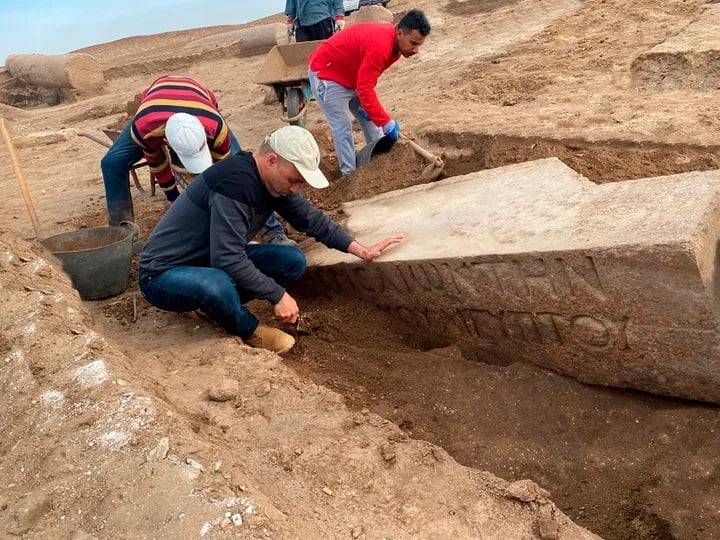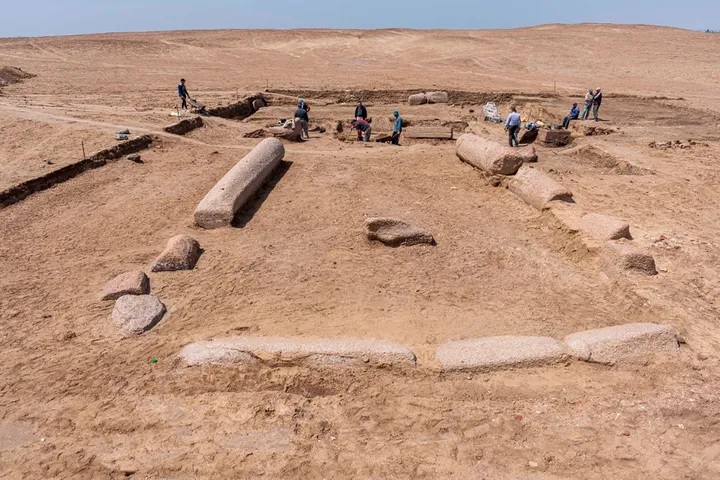
Archaeologists recently unearthed the ruins of a temple for the ancient Greek god Zeus in the Sinai Peninsula, authorities in Egypt said.
In a statement, the Tourism and Antiquities Ministry said the temple ruins were found in the Tell el-Farma archaeological site in northwestern Sinai.
Tell el-Farma, also known by its ancient name Pelusium, dates back to the late Pharaonic period and was also used during Greco-Roman and Byzantine times. There are remains dating to the Christian and early Islamic periods, as well.
Pelusium, Pelousion in Greek, was located on the easternmost mouth of the Nile River. Almost four miles long, the site is enveloped by soft, salt-covered mud and wetlands, the remains of two branches of the Nile that once surrounded the city.
The ancient name of the city, from the Greek pelos, mud or silt, reflects its location.
Located on Egypt’s eastern boundary, the city was of immense strategic importance. It was both a departure point for Egyptian expeditions to Asia and an entry point for foreign invaders attempting to conquer Egypt. During peacetime, it was an important trading post, and in the Graeco-Roman period, it became one of Egypt’s busiest ports, second only to Alexandria.
Ships from the eastern Mediterranean and caravans from Syria-Palestine came here to exchange goods, such as wine, oil, and honey, which were transported to Egypt and the Red Sea by Nile barge and overland roads.

The Temple of Zeus in Egypt destroyed in a powerful earthquake
Mostafa Waziri, secretary-general of Egypt’s Supreme Council of Antiquities, said, according to the Associated Press (AP), archaeologists excavated the temple ruins through its entrance gate, where two huge fallen granite columns were visible. The gate was destroyed in a powerful earthquake in ancient times, he said.
Waziri said the ruins were found between the Pelusium Fort and a memorial church at the site. Archaeologists found a set of granite blocks probably used to build a staircase for worshipers to reach the temple.
Excavations at the area date back to the early 1900s when French Egyptologist Jean Clédat found ancient Greek inscriptions that proved the existence of the Zeus-Kasios temple, which, however, he didn’t unearth, according to the ministry.
Zeus-Kasios is a conflation of Zeus, the God of the sky in ancient Greek mythology and Mount Kasios in Syria, where Zeus once worshipped.
Hisham Hussein, the director of Sinai archaeological sites, said inscriptions found in the area show that Roman Emperor Hadrian (117-138) renovated the temple.
He said experts will study the unearthed blocks and do a photogrammetry survey to help determine the architectural design of the temple.
Related: Ancient “Notepads,” Many Written in Greek, Uncovered in Egypt